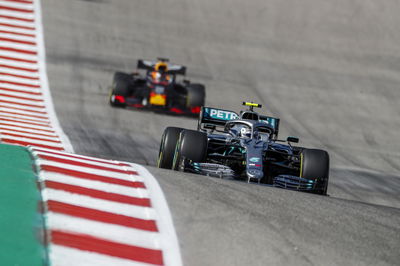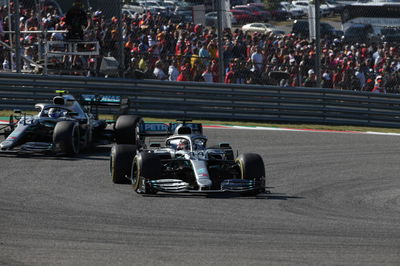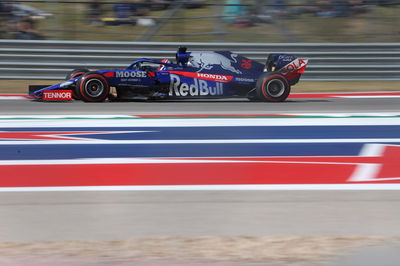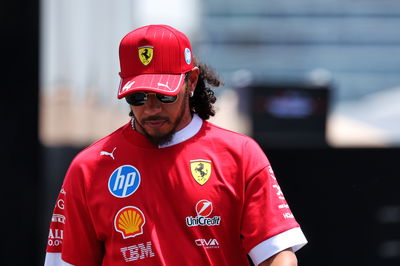F1 Race Analysis: How bulletproof Bottas saw off a double threat
“Unavoidable.”
That was the word Valtteri Bottas chose when reflecting on his title defeat to Lewis Hamilton in the aftermath of Sunday’s United States Grand Prix, with the mathematics finally confirming what has been forecast for some time.
At last, the title race is finally done and dusted. Hamilton is a six-time world champion. But boy, did Bottas go down with one hell of a fight in Austin.

“Unavoidable.”
That was the word Valtteri Bottas chose when reflecting on his title defeat to Lewis Hamilton in the aftermath of Sunday’s United States Grand Prix, with the mathematics finally confirming what has been forecast for some time.
At last, the title race is finally done and dusted. Hamilton is a six-time world champion. But boy, did Bottas go down with one hell of a fight in Austin.
The Finn did everything in his control to keep the title race alive, even with the odds stacked so heavily against him. Only a win would do for there to be any chance of Hamilton’s coronation being postponed for another two weeks – and Bottas delivered in fairly dominant fashion.
He may have only regained the lead with five laps to go, but Bottas was simply a step ahead of the rest of the field in Austin. From topping a tight qualifying on Saturday to keep his nerve at the front, he offered the kind of ice-cool display that he looked a million miles from producing this time 12 months ago.
For it was not an easy race for Bottas to win. Ferrari may not have put up any kind of challenge after a disastrous start and awful race pace – the reasons for which one of its rivals was only all too eager to hint at after the race – but Bottas was still fighting a race on two fronts as split strategies from Hamilton and Red Bull’s Max Verstappen put him under pressure.
All of the strategy guides pointed to this being a simple one-stop race, especially for the front-runners who had decided to run on Mediums in Q2. So long as they could get anywhere near mid-distance before moving to Hards, they should be able to manage things in straightforward fashion to the end.
But Red Bull had other ideas. Even while nursing damage to his front wing and floor, Verstappen’s pace through the opening stint remained decent, putting him within striking distance of Bottas. The gap never grew larger than three seconds before Red Bull pulled the pin and called Verstappen in at the end of Lap 13.
Not only did it relieve the pressure building on Verstappen from Hamilton behind, but it also put pressure on Mercedes to make a decision. Getting the Hards to last the 43 remaining laps was a big, big ask, making it clear that a two-stop strategy was the way Red Bull was moving.
Verstappen was close enough to make the undercut work unless Mercedes reacted with Bottas immediately, giving the team little time to take a call. It ultimately decided to respond to Red Bull in kind, bringing Bottas in at the end of Lap 14 to also take a set of Hards. Bottas emerged from the pits still ahead of Verstappen, albeit by a reduced margin. One lap later, though, and the position would have been lost.
Then came the decision on what to do with Hamilton. There was little to achieve in also putting him on a two-stop given Verstappen’s early pace, so Mercedes instead opted to split strategies – a tactic that served it well in both of the last two races. Hamilton was kept out longer on the Mediums to fulfil the originally planned one-stop strategy, coming in on Lap 24.
With fresh rubber at his disposal, Hamilton wasted little time in putting in some fast lap times to try and bridge the 15-second gap to Verstappen in P2, only to quickly be warned that he had to get these tyres to the very end. His pace stabilised thereafter, knowing that both Bottas and Verstappen would be coming in for a second time.
Bottas had run well through his second stint on the Hards, growing the gap to Verstappen to more than seven seconds before the Red Bull driver came in for a second time. Mercedes reacted immediately yet again, dropping Bottas behind Hamilton into P2, needing to make up a 10-second gap in the final 20 laps.
It started very well for Bottas. His Mediums switched on quickly, allowing him to pump in some quick lap times that reduced the gap to 4.4 seconds in just five laps. It seemed like a formality that he could catch and pass Hamilton, who was even offered the chance to come in for a second time to try and have a run at Verstappen. Hamilton said no, preferring to stay out and roll the dice for victory to cap off his coronation.

And at one stage, it looked like he just might manage it. Similar to Japan and Mexico, two races where the Hard tyre held up better than expected, Hamilton was still putting in fairly consistent and competitive lap times nearing the end of the tyres’ predicted life. Traffic was certainly helping his cause in holding Bottas up, leaving the man in P2 fearing he would not get back ahead: “At one point I was a little bit worried that Lewis would be able to maintain the pace until the end - but his tyres started to go towards the end.”
Hamilton’s tyres hit a cliff around Lap 50, when he went from a run of times in the 1m38s and low 1m39s to 1m40s, giving Bottas – now with nothing but track to his teammate – the chance to get ahead. Mercedes were happy to let their drivers race freely, the constructors’ championship having been wrapped up long ago, with Hamilton putting the squeeze on Bottas when he attempted a pass on Lap 51. Next time around though, he was powerless to stop his teammate from flying past with some help from DRS on the back straight.
Bottas showed real nerves of steel in his charge. He managed his tyres well so as to not overdo it early in the final stint, and planned his move on Hamilton with aplomb. He knew it was his race to lose – and he wasn’t going to let it slip through his fingers.
Hamilton may have assured himself on the title in Austin, but Bottas’ victory also confirmed him as the world drivers’ championship runner-up for the very first time with two races to spare. He also has more points and more wins under his belt for a season than ever.
While the title has been lost, he can sense the momentum he is building – and knows just how valuable that could be in the future.
“It is my best season, performance-wise, result-wise, and overall. I think the main learning from this year is I need to just keep the good momentum going,” Bottas said.
“I feel like I’m getting better every year, so that’s why I look forward to next year. For sure again I’m going to work hard in the winter to be able to be better next year and challenge Lewis and all the rest again.”











